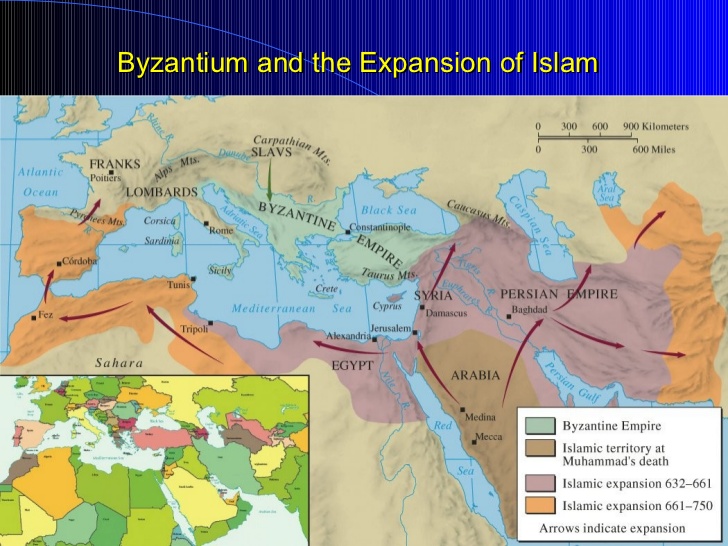Published on 18 Mar 2017
Chair of Wisdom Time! This week we talk about the propaganda story of the crucified soldier and the RMS Olympic.
March 19, 2017
Crucified Soldier – RMS Olympic – Somme Cavalry I OUT OF THE TRENCHES
Byzantium, Persia and the rise of Islam
At The Declination, Dystopic explains why he’s fascinated by the untold stories of the sudden influx of Muslim armies from the Arabian peninsula that shattered the Persian Empire and nearly toppled the Byzantines in the 7th century:

Image from World History Unit 4 Byzantium And Islam
In the course of perusing my backlinks, I discovered a little-known blog call the House of David. This one is fascinating because the author delves deeply into a topic which has bothered me for most my life: just how was it that Islam conquered Sassanian Persia and most of Byzantium more or less simultaneously? Normally this question is answered in the West, at least, by primarily Greek sources. Those are useful, yes, but only paint part of the picture. The proprietor of House of David seeks to answer the question from Persian and Arabic sources, also.
The strangeness of this event cannot be overstated. As successors to the Romans (or as Romans themselves, depending on how you account them), the Byzantines were masters of siege craft. Certainly the Theodosian walls impress well enough. Being consummate engineers of fortifications, Roman forts and walled cities dotted the empire, and for the most part, the Romans were excellent at defending them. The Byzantines continued the tradition of effective defense throughout most of their history, as they were under near-constant assault from all sides.
[…]
In some cases, of course, there was treachery from some of the Byzantines themselves, most notably in Egypt. But in other cases, such as the Exarchate of Africa, local Byzantine resistance was absolutely fierce. The wars in North Africa absolutely devastated the place. It never recovered after this. So complete was this devastation and desolation that Carthage, which bounced back even after the Romans razed it, never recovered from it. Even conquest by the Vandals had not been so terrible.
And still, after the Byzantines themselves lost much of North Africa, the native Christian Berbers continued to resist for some time under a supposed witch-queen named Kahina. And Byzantine resistance remained for a time around Cueta even after Carthage was destroyed, where the possibly-apocryphal Count Julian was said to have finally thrown in with the Muslims in order to avenge himself upon the Visigoths.
Yet the Arab steamroller moved on.
The final triumph of Byzantine siege craft could be seen in the twin Arab sieges of Constantinople, both beaten back effectively by the Byzantines. So why did they lose so completely everywhere else?
Phonograph vs. Gramophone – The Invention of Sound Recording Part 1 I THE INDUSTRIAL REVOLUTION
Published on 27 Feb 2015
The desire to record the human voice can be traced back to the 10th century. Thomas Edison is the first man who finally crafted the phonograph, a machine that can record sound. A few more GREAT MINDS are necessary to improve the technology until the first record made of shellac is produced. Emile Berliner, the inventor of the gramophone, is the reason why record lovers still listen to vinyl LPs to this day! This is the first part of our small series about the invention of sound recording.



